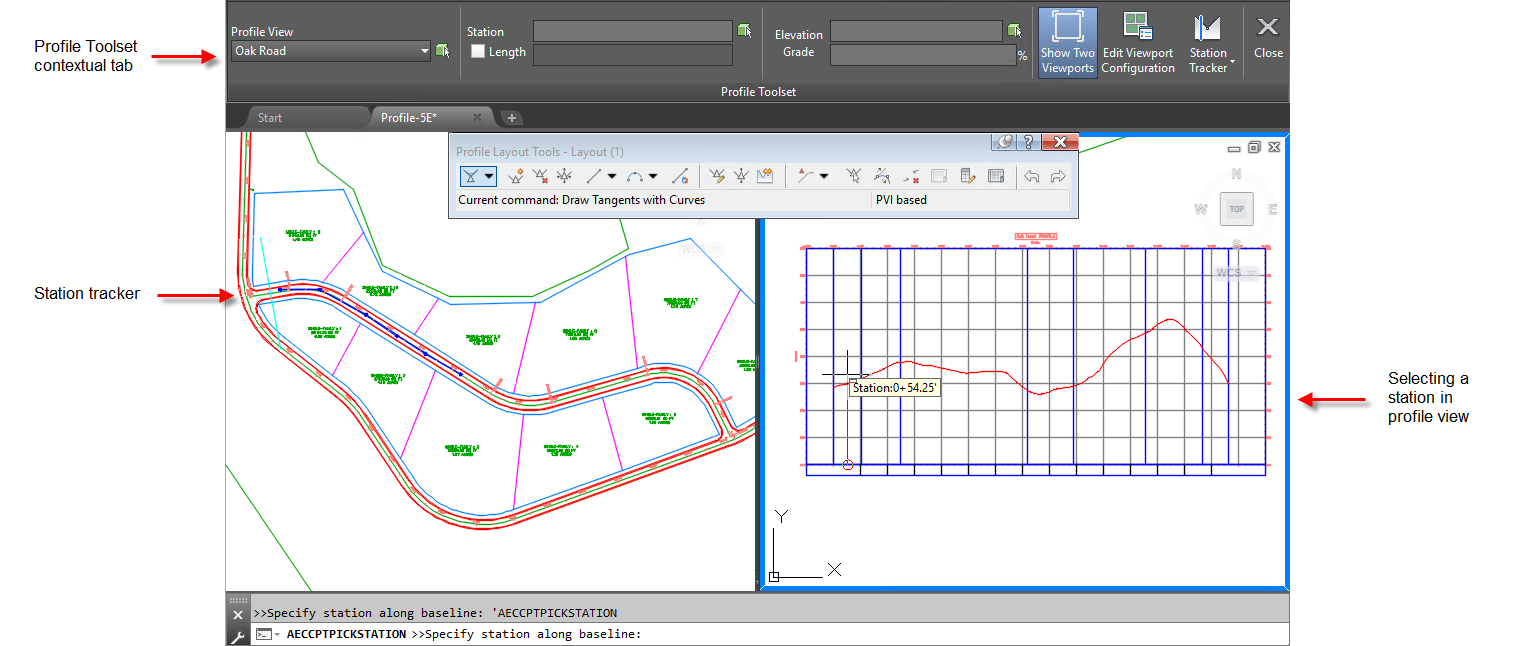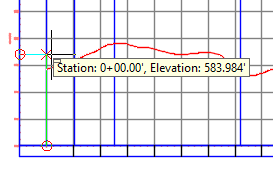Use the Profile Toolset transparent command to specify station, elevation, grade, or length values when creating and editing profiles.
While you are running a command, you can select the Profile Toolset command on the Transparent Commands ribbon tab to display the Profile Toolset contextual ribbon tab.
When you are creating and editing profiles, you can use the options on the Profile Toolset tab to specify profile values. For example, you can specify a starting station and elevation and then a length and a grade while creating a vertical tangent.
The Profile Toolset includes the functionality of the following transparent commands:
- Profile Station Elevation
- Profile Grade Station
- Profile Grade Length
- Profile Grade Elevation
- Profile Station from Plan
The following illustration shows the Profile Toolset contextual tab as it was invoked while creating a layout profile. When you click the Profile Toolset button on the Transparent Commands ribbon, the Profile Toolset tab is displayed and the drawing viewports are configured to display a plan view and a profile view.

You are first prompted to specify a station. You can select a station by clicking in either plan view or profile view. You can also enter or change the station value in the Station field on the ribbon.
After you specify the station, you are prompted for an elevation. You can move your cursor and click to specify the elevation.

After you specify the first point using a station and elevation, you can then use the other options on the Profile Toolset tab like Length and Grade to continue to draw profile entities.

Profile Toolset Contextual Ribbon Tab
When you click the Profile Toolset button on the Transparent Commands ribbon, the Profile Toolset tab is displayed.
- Profile View: Specifies the profile view in which you want to run the transparent command. Use the drop-down list or click
 to select a profile view in the drawing.
to select a profile view in the drawing.
- Station: Specifies the station to use or displays the station that was selected in the drawing. You can edit the station and press Tab or Enter to change it. You can also click
 to select a station in either plan or profile view.
Note: When you specify a station, you can also specify either an elevation or a grade on the Elevation panel.
to select a station in either plan or profile view.
Note: When you specify a station, you can also specify either an elevation or a grade on the Elevation panel. - Length check box: When selected, enables the Length field.
Note: When you select the Length check box, you can specify a length in the Length field and you can also specify a grade in the Grade field. The Station and Elevation fields become unavailable.
- Length: Specifies the length to use. Use along with a specified grade to create a PVI at a specified length and grade.
- Elevation: Specifies the elevation to use or displays the elevation that was selected in the drawing. You can edit the elevation and press Tab or Enter to change it. You can also click
 to select an elevation in profile view.
to select an elevation in profile view.
- Grade: Specifies the grade to use. Use along with a specified length.
- Show Two Viewports: Switches the viewport configuration from two viewports back to a single viewport. When you first open the Profile Toolset ribbon tab, the drawing viewports are configured to display a plan view and a profile view. You can click Show Two Viewports to restore the viewports to their previous state and back again to two viewports.
- Edit Viewport Configuration: Opens the Viewport Configuration dialog box which you can use to set up the viewports.
- Station Tracker: Provides options for controlling the display of the station tracker lines in the viewports. For more information, see To Track Stations in Alignments, Profiles, and Sections.